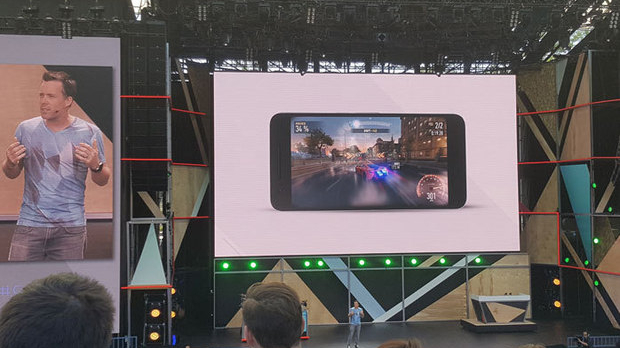Google’s been hard at work under the hood of its Android operating system, announcing performance, security and productivity updates in the new Android N alongside a swanky new suite of VR capabilities called Daydream and version 2.0 of Android Wear. Here are the highlights from the announcement from the first day of Google I/O.
Android N – the latest version of the open source platform – is available for select devices in beta today, and will be released in a stable version this autumn. It’s been publicly available as an open alpha for developer use for some time, but Google’s presentation yesterday offered the company’s definitive vision for the future of the Android platform: a combination of performance, productivity and security across multiple form factors, from phones to TVs.
Oh, and about the name – Google’s taking suggestions from the public, and you can submit yours here.
Android Wear 2.0
This was a major overhaul of the wearable side of Android – it added robust new API capabilities, allowing wearables to work with a wider variety of apps, a new UI and, perhaps biggest of all, support for standalone apps, removing the dependence on a paired smartphone for connectivity. (Although, of course, you’ll need a wearable device with its own connectivity hardware, whether that’s Bluetooth, Wi-Fi or mobile.)
“With standalone apps, watches with cellular support become even more powerful,” said David Singleton, the head of Android Wear. “You’ll be able to make calls, get help from Google, and use your favorite apps right on the watch, no matter where your phone is.”
Performance: Google has done some under-the-hood tinkering in Android N, reworking the platform’s runtime and graphics capabilities. Engineering vice president for Android Dave Burke said from the keynote stage that the changes were substantial.
“We’ve made major optimisations to our compiler,” he told the crowd, touting 75% faster app installation in Android N and big JIT performance improvements.
On the graphical side, a new API called Vulkan offers desktop-like direct access to GPU hardware for developers, which will allow them to wring the best possible frame rates out of demanding applications like games without sacrificing visual flash.
Productivity: Android N brings with it the kind of general usability improvements common to big new Android versions – this time, the addition of native split-screen (already present in some vendor versions of the software) and a handy double-tap on the recent apps button for an easy flick back and forth between two different apps, sort of like a mobile Alt+Tab, are the highlights.
There’s also the ability to respond directly to notifications – e.g., tapping a text message notification gives you the option to reply right there – as well as the option to change notification settings for an app simply by long-pressing a notification. (No more having to hunt through the settings menus to silence an obnoxious over-notifier.)
Security: Google provided three main security improvements in Android N – file-based encryption, hardened media frameworks and silent, automatic updates.
File-based encryption allows for more granular protection, according to Burke.
“By encrypting at the file level, instead of the block level, we’re able to better isolate and contain individual end users of the system,” he said.
But neither that nor the improved media framework security is likely to be as noticeable to users as the new silent updater, which, a la Google Chrome, downloads updates automatically and in the background, with no user input. This also has the happy side effect of eliminating the apparently endless ‘Android is upgrading… app 4 of 5,773’ dialogue that occurs during an update.
Daydream
Daydream, in essence, is a Google-created VR standard – smartphones that meet the hardware requirements for high-end sensors and processors are ‘Daydream-ready,’ and can be used with the company’s simple hand controller and a new headset rig. Google said that the idea is to reduce motion-to-photon latency to provide a smooth, responsive experience. Daydream will be fully integrated into the broader Android system, so notifications and such will appear even in VR mode.
But the biggest news where Daydream is concerned may be in its applicability to the broader Google ecosystem – the company detailed plans to integrate it into Maps, allowing users to experience Street View in VR mode, a revamped YouTube app that would offer both a virtual movie theater mode and support for full VR videos, and more.
Daydream-ready phones will be coming out “in the fall,” manufactured by the usual suspects Samsung, HTC, LG and others, but Google didn’t get any more specific.
Network World








Subscribers 0
Fans 0
Followers 0
Followers